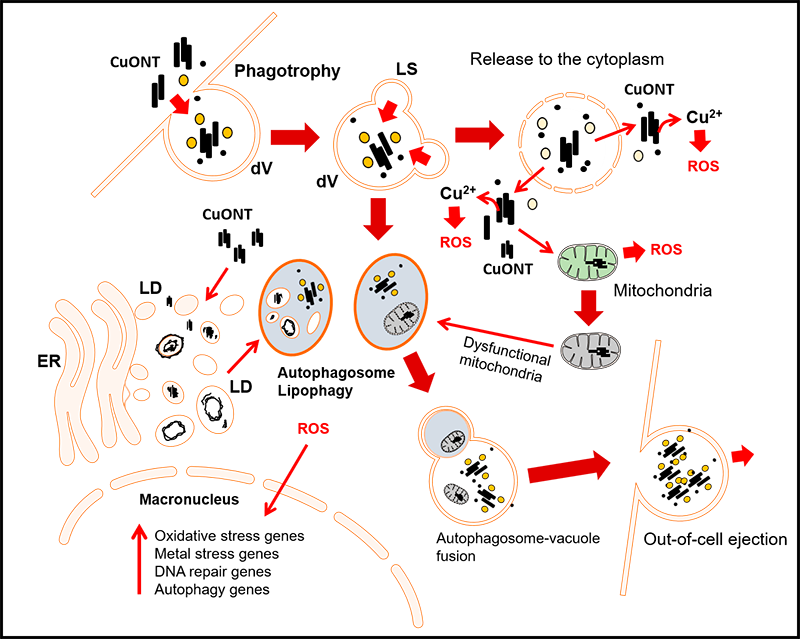Morón, A.; Martín-González, A.; Díaz, S.; Gutiérrez, JC, Amaro, F. 2022.
Autophagy and lipid droplets are a defense mechanism against toxic copper oxide nanotubes in the eukaryotic microbial model Tetrahymena thermophila.
Science of the Total Environment 847: 157580.
DOI: org/10.1016/j.scitotenv.2022.157580
RESUMEN
The widespread use of inorganic nanomaterials of anthropogenic origin has significantly increased in the last decade, being now considered as emerging pollutants. This makes it necessary to carry out studies to further understand their toxicity and interactions with cells. In the present work we analyzed the toxicity of CuO nanotubes (CuONT) in the ciliate Tetrahymena thermophila, a eukaryotic unicellular model with animal biology. CuONT exposure rapidly induced ROS generation in the cell leading to oxidative stress and upregulation of genes encoding antioxidant enzymes (catalase, superoxide dismutase, glutathione peroxidase), metal-chelating metallothioneins and cytochrome P450 monooxygenases. Comet assays and overexpression of genes involved in DNA repair confirmed oxidative DNA damage in CuONT-treated cells. Remarkably, both electron and fluorescent microscopy revealed numerous lipid droplets and autophagosomes containing CuONT aggregates and damaged mitochondria, indicating activation of macroautophagy, which was further confirmed by a dramatic upregulation of ATG (AuTophaGy related) genes. Treatment with autophagy inhibitors significantly increased CuONT toxicity, evidencing the protective role of autophagy towards CuONT-induced damage. Moreover, increased formation of lipid droplets appears as an additional mechanism of CuONT detoxification. Based on these results, we present a hypothetical scenario summarizing how T. thermophila responds to CuONT toxicity. This study corroborates the use of this ciliate as an excellent eukaryotic microbial model for analyzing the cellular response to stress caused by toxic metal nanoparticles.
 Tetrahymena thermophila. " style="max-width:800px;"/>
Tetrahymena thermophila. " style="max-width:800px;"/>